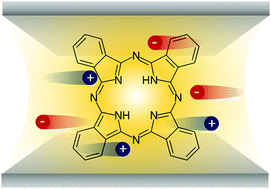Charge transport in phthalocyanine thin-film transistors coupled with Fabry–Perot cavities†
Abstract
Strong light-matter coupling can form hybrid states at new energy levels that share properties of both light and matter. This principle offers new routes to control material functions without modifying the chemical structure of molecules. In this work, we coupled ambipolar semiconducting thin films to a Fabry–Perot cavity and investigated effects on charge transport. By constructing thin-film transistors inside optical cavities, we could simultaneously study coupling features and charge transport in the same samples. The cavity resonance was detuned by controlling the thickness of the top spacer layer in the cavity. We found no significant influence on charge transport for our systems, which may be related to insufficiently strong coupling. Possible additional origins and future directions are also discussed.



 Please wait while we load your content...
Please wait while we load your content...